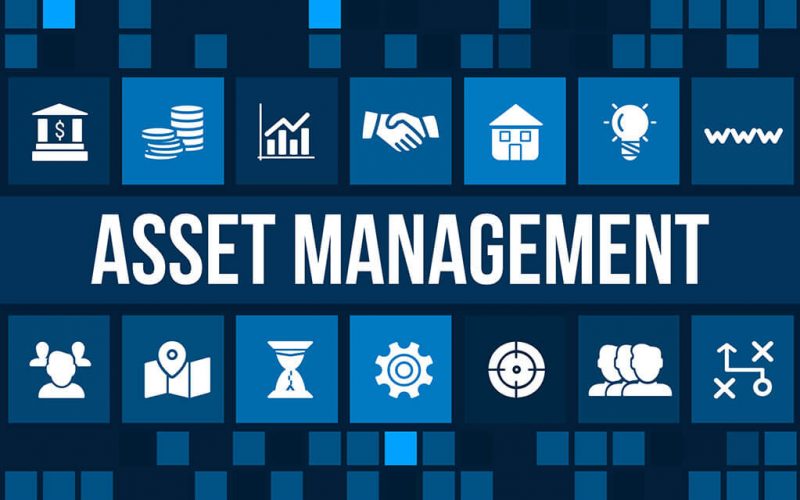Asset management talks about the activity of raising overall wealth over time. Through acquiring, keeping, and trading investments with the potential to rise in value. Moreover, we’ll be looking at Asset management System, Digital, Example, and, Salary.
The Asset Management
Every business must maintain track of its assets. As a result, its stakeholders will be aware of which assets are accessible for use in order to maximize returns. Any company’s assets are divided into two categories: fixed assets and current assets. Fixed or non-current assets are assets obtained for long-term usage, whereas current assets are those that can be turned into cash quickly.
Asset Management’s Importance
Businesses should be aware of asset management for a variety of reasons, including:
#1. Allows a company to account for all of its assets.
The procedure makes it simple for businesses to maintain track of their assets, whether liquid or fixed. Moreover, firm owners will be aware of where their assets are situated. Plus how they are being used, and whether they have been modified. As a result, asset recovery can be done more efficiently, resulting in higher profits.
#2. Assists in ensuring the accuracy of amortization rates
Because assets are verified on a regular basis, the asset management process guarantees that they are accurately recorded in the financial accounts.
#3. Aids in the identification and management of risks
Asset management entails identifying and managing risks associated with the use and ownership of specific assets. It means that a company will always be ready to deal with any risk that comes it’s way.
#4. Eliminates fictitious assets from the company’s inventory
There have been instances where assets that have been lost, destroyed, or stolen have been incorrectly documented on the books. A strategic asset management plan will make the firm’s owners aware of any assets that have been lost and will erase them from the books.
Asset Management System
In a nutshell, an asset management system is any procedure that an organization employs. So as to keep track of the equipment and inventory that are critical to the day-to-day running of their enterprises.
Assets management system users
An assets management system’s goal is to reduce the entire cost of acquiring, maintaining, and operating assets. Furthermore, it allows you to control operations more efficiently, allowing assets to perform at their best. This can be useful for:
- Firstly, Cost containment
- Secondly, Keeping production quality high
- Lastly, Return maximization
However, in order to develop an efficient assets management plan, it is critical to recognize that assets system management encompasses a wide range of responsibilities.
An asset tracking application, for instance, employs technology such as GPS and RFID to track physical assets such as employees, IT equipment, and cars.
The Advantages of Asset Management System in Business
The benefits of an assets management system to both large and small enterprises are enormous; however, they are sometimes neglected.
A well-implemented assets management software can:
- Firstly, Allow you to monitor and track all assets from a single central ‘hub.’
- Secondly, All assets can be managed from any place.
- Then, Identify and manage asset risks
- Next, Understand and monitor the life-cycle of an asset.
- Then, Identify and eliminate ghost assets.
- Furthermore, Plan maintenance schedules efficiently and without disrupting services.
- Next, Produce detailed asset reports and audits.
- Finally, An assets management system can reduce the need for spreadsheets by monitoring all assets in a centralized system.
Digital Asset Management
Digital asset management (DAM) is a system that centrally stores, shares, and organizes digital assets. In addition, It boosts the value of creative files such as photographs, movies, and other material. Finally, DAM is a company’s solution for information exchange and storage.
Why is digital asset management important?
By centrally storing enormous amounts of digital content. Digital assets management liberates teams and keeps branding materials relevant. Hence, It improves digital asset protection, organization, and searchability. Moreover, a digital assets management system increases content storage while maintaining brand requirements. Most significantly, it empowers people by allowing them to focus on what is truly essential.
Top advantages of digital assets management software
Firstly, Organizes digital assets in one place.
Then Improves team creativity by automating workflows.
Next, Using powerful search features, it swiftly locates media assets.
Next, In charge of press kits and image collections.
Plus Watermarking for photos are automate.
Moreover, Permissions are in management using extensive copyright functionality.
Finally, Automatically tags photographs and employs facial recognition
Examples of digital assets management
Three examples of Canto DAM in action are provided below. The following use-cases demonstrate how DAM systems can benefit businesses.
Case 1 for Digital Asset Management: Internal centralized administration
Canto DAM internalizes centralization to boost internal efficiency. This procedure entails developing a centralized location for all digital materials to be store. As a result, different departments can access the same branded files and send/retrieve assets to/from the DAM.
Case 2: Digital Asset Management: External dispersion
External distribution allows businesses to share branded materials with third-party vendors. Such as freelancers and other outside contractors. Fortunately, this maintains brand consistency by requiring all potentially interested parties to utilize the same brand materials. Similarly, DAM, for instance, assists companies in reducing the asset-request time by making media requests self-serving.
Case 3: Digital Asset Management: Storage on the inside
DAM enables businesses, such as agencies, to keep recovered digital assets from clients until they are ready to send them off to an external source, such as the media. Moreover, Canto DAM streamlines the entire process, saving both time and space.
Asset Management Example
So, how does asset management work in practice? Here are a few examples of how this principle is put into action.
Example 1 High-end asset management firms
Customers open an assets management account, which includes the services of a personal financial advisor. Then you’ll gain access to a variety of investment options in order to make the most of your existing assets. Plus, asset managers at firms such as BlackRock and Fidelity Investments will consider the client’s tax condition, liquidity needs, and income requirements.
Example 2 Firms specializing in mid-range asset management
Mid-range asset management firms, such as Vanguard, specialize in serving smaller investors. Thereby offering options such as mutual funds that pool resources. Moreover, mid-range clients don’t have to be concerned with tax structures or asset placement as much. Although assets can still be put to work in a central investment portfolio.
Example 3 Tools for managing digital assets
If you prefer to handle your assets internally. Then search for digital platforms and applications that use algorithms to manage portfolios. Tracking software can also serve as a central database for your current assets.
Example 4 Personal asset management
Certified investment advisors, who outsource administration to a third party but can provide bespoke advice, are also asset management tools.
Asset Management Salary
The top salary for Asset Management in the United States is $136,554. Then the lowest salary for Asset Management in the United States is $35,718. However, you should note that the asset management salary differs, depending on your position, experience, and qualifications.
Basically, you can’t compare a salary of a director of asset management to that of a mere employee.
Finally, with an average salary of £50,000 and the possibility to advance through the ranks. Asset management is a very desirable career for many graduates. This is an amazing field to enter right out of university.
How Does Asset Management Operate?
The day-to-day management of a wealth portfolio is known as asset management. An investment manager typically serves as its leader. Building a portfolio of investments is a component of asset management. This entails evaluating risks, identifying opportunities, and creating a comprehensive plan for achieving a number of financial goals.
What Serves as Asset Management’s Primary Objective?
Asset management is to increase an investment portfolio’s value over time while keeping risk at a manageable level.
What Should I Research To Become an Asset Manager?
The optimum combination would be a business or finance degree followed by a graduate program, such as an MBA. The option to enroll in one of the several dozen professional certifications, such as the Chartered Financial Analyst (CFA) or the Chartered Alternative Investment Analyst (CAIA), is also available.
Is Asset Management a Lucrative Profession?
Some believe asset management has less stress than a profession like investment banking, yet it still pays very well. Particularly for people who are enthusiastic about the financial markets and enjoy studying firms, the task is mentally exciting.
Conclusion
Simply put, asset management is the process of producing, running, maintaining, and selling assets.
Asset Management FAQ’s
What is the role of assets management?
Assets management is meant to cultivate market value so ownership can increase its returns, whether it has to do with real estate or any other asset. An asset manager manages assets on behalf of someone else, making important investment decisions that will help the client’s portfolio grow
What are the types of assets management?
- Digital Assets management
- Fixed Assets management
- IT Assets management
- Enterprise Assets Management.
- Financial Assets management
- Infrastructure Assets management
What is asset management with example?
In finance, assets management refers to the overseeing of investment portfolios. Investment banks or individual asset managers will oversee the assets contained within this portfolio, mitigating risk while finding ways to increase their value. … Increase the asset’s rate of return. Track performance.
What are assets management skills?
Volen Volkov. Strong assets management skills are crucial to employers. They ensure you can assess risks and manage multiple investment portfolios at a time. Asset management skills aren’t inherent skills that just anyone can develop naturally. They come from extensive education and training.
What skills do you need in assets management?
- Strong analytical skills.
- Highly skilled in math and finance.
- Excellent communication skills.
- Strong time-management skills.
- Detail oriented and highly organized.
- Skilled in negotiation and project management.
- Excellent critical thinking skills.
- How to Successfully Start and Manage Your Staffing Business
- Top 10 Digital Marketing Companies in Nigeria (Updated!)
- Why Should Law Students Consider a Career in Business Law
- CHANGE AGENTS: How to Identify Change Agents in any Organization
- Marketing Environment: Definition, Concept & Best Practices (+ Case Studies)






